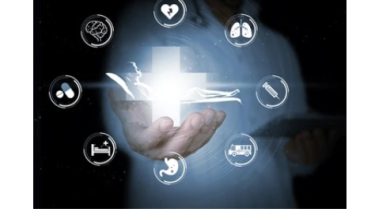
Leadership during a pandemic is about building a culture and leading from the front
COVID-19 pandemic is an unprecedented devastating event of the century that has adversely impacted almost every household across the world in some way or the other. It caught everyone unawares, unprepared and most of all healthcare facilities where this war is being fought- every day for almost 18 months now.
The past year has been a lot about collaboration, teamwork, agility, and inherent strength to deal with the
crisis. The recent wave has been most catastrophic with a virulence that was not seen before. Almost every healthcare worker has a tale of helplessness, grief and loss within their family, friends or patients they
got emotionally attached to during illness. Yet there are stories of bravery, empathy, leadership, and ownership
that unfolded on the ground daily- be it a nurse holding hands of patients in the covid ward, a biomedical engineer working 24/7 optimising equipment usage, administrative teams tracking tankers of oxygen in the middle of the night to ensure we live the promise we made to our patients, supply chain teams ensuring uninterrupted supply of essentials, of course, doctors battling in the forefront and many more unsung heroes.
Leadership in these times is about building a culture and leading from the front. Senior leaders need to show up, involve all stakeholders and put together an action plan while supporting execution by channelising all resources towards that plan. Keeping up the morale of the team, motivating them, ensuring their wellbeing and assuring them of all possible support in case of any eventuality is extremely important in this situation. At Fortis, we
started with daily wellbeing sessions three times a day where people could log in for a session with psychologists and experts. Besides this, sharing appreciation, accolades with warriors, sending Thank you letters to their families, just being there to hear them out and support their needs builds that culture of trust, purpose-led workplace and empathy. In the end, it’s all about people who deliver care, not beds, neither medicines, oxygen or ventilators alone. The most precious resource to tackle pandemic is a trained workforce on the ground and they need to be looked after very well.
It is equally important to work closely with external stakeholders be it government officials, involved industry
bodies or task forces. At the time of the oxygen crisis, we did manage to get timely support from some industrial
organisations that helped augment the constrained supplies. Similarly keeping authorities informed in real-time about the situation on the ground helped avert the major crisis at times. Sharing our own experiences, validated data, learning with wider forums, academic and otherwise is important to dispel myths and misinformation floating in social media.
Technology has played an important role in this crisis. We started video consults very early last year that
enabled patients to remain connected with doctors for both covid and noncovid ailments. Similarly, innovative
solutions like e-ICU and real-time remote monitoring of patients in ICU by critical care specialists helped manage
a large number of patients effectively.
Digital mode of transactions, PACS and communication among teams and with patients helped cross barriers of time and minimise physical interaction and contain further spread of infection. Teams have been resilient and adapted fast to incorporate learnings from each wave. Infrastructure was quickly upgraded to the extent possible, clinical protocols got streamlined, staff got trained and learnt to live behind masks, donned in PPEs and worked relentlessly.
“Adapting fast” is the key. We reinforced core clinical teams managing a large number of covid in patients by creating training modules for other medical super specialities who are anyway trained in Internal medicine. That allowed setting up covid helplines for the patient who could now get access to immediate expert help. Our emergency rooms were stepped up with the entire ICU back up to be able to handle patients waiting for ICU beds. Expert Emergency physicians were well versed in taking care of these patients till they could get shifted to ICU- sometimes it extended up to 2/3 days.
The pandemic is still ongoing, and we need to brace ourselves for potentially third or subsequent waves. There
could be other pandemics as well and the learning we had, needs to be sustained and become part of how we deliver patient care. As a healthcare leader, we need to be agile and invest in infrastructure which can cater to clinical needs as they arise. It would mean being able to convert any ward to HDU/speciality ward, create space in hospitals for makeshift ICUs or have a multi trained basic workforce who can manage adults and children. We also need to have a central repository of resources that can be deployed across regions. ECMO machine is one such example where availability is limited, and few hospitals have a programme to deploy these machines. If idle machines could be channelised to these centres, it would help save lives. We need to capture our learning through data analysis and publications. Our next frontier should be to reduce mortality further and understand the disease better, anticipate the virulence just as the first few cases come up and activate levers to save as many lives as possible.
The pandemic is far from over but the past year has made us stronger and prepared us to fight these challenges
head-on. Our learnings and experiences have helped us navigate this new normal together. As we try to help one another in the best ways we can, our vast world suddenly feels a little smaller and a lot more connected to fight the pandemic together.




